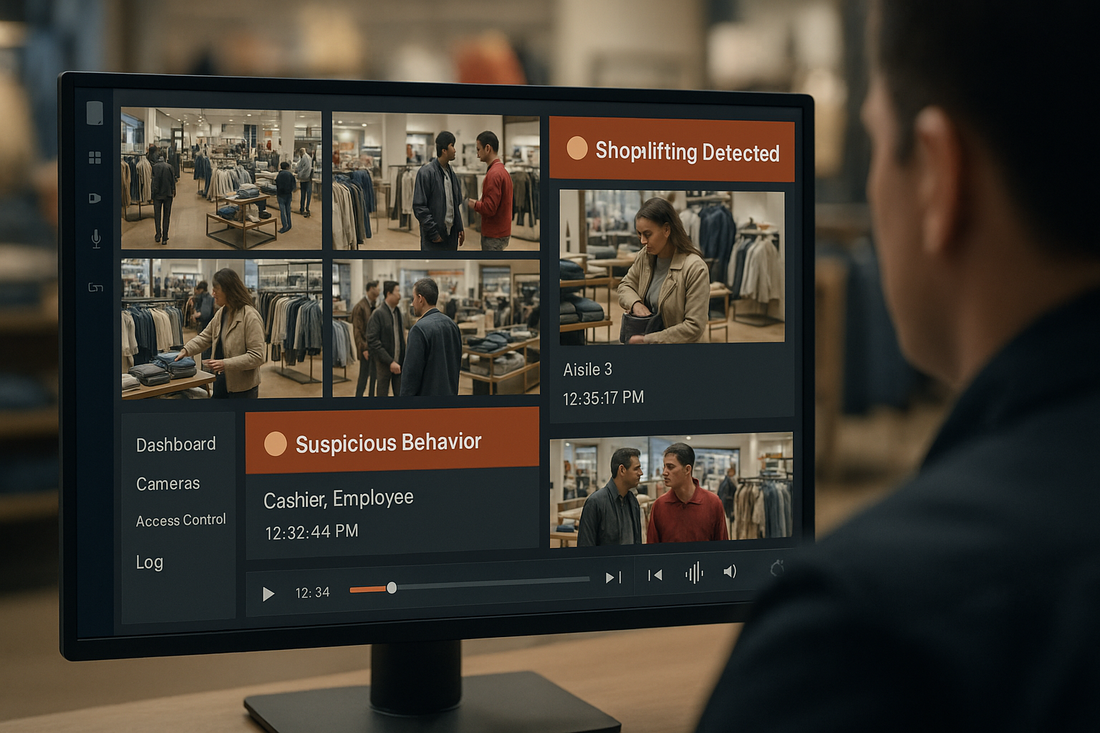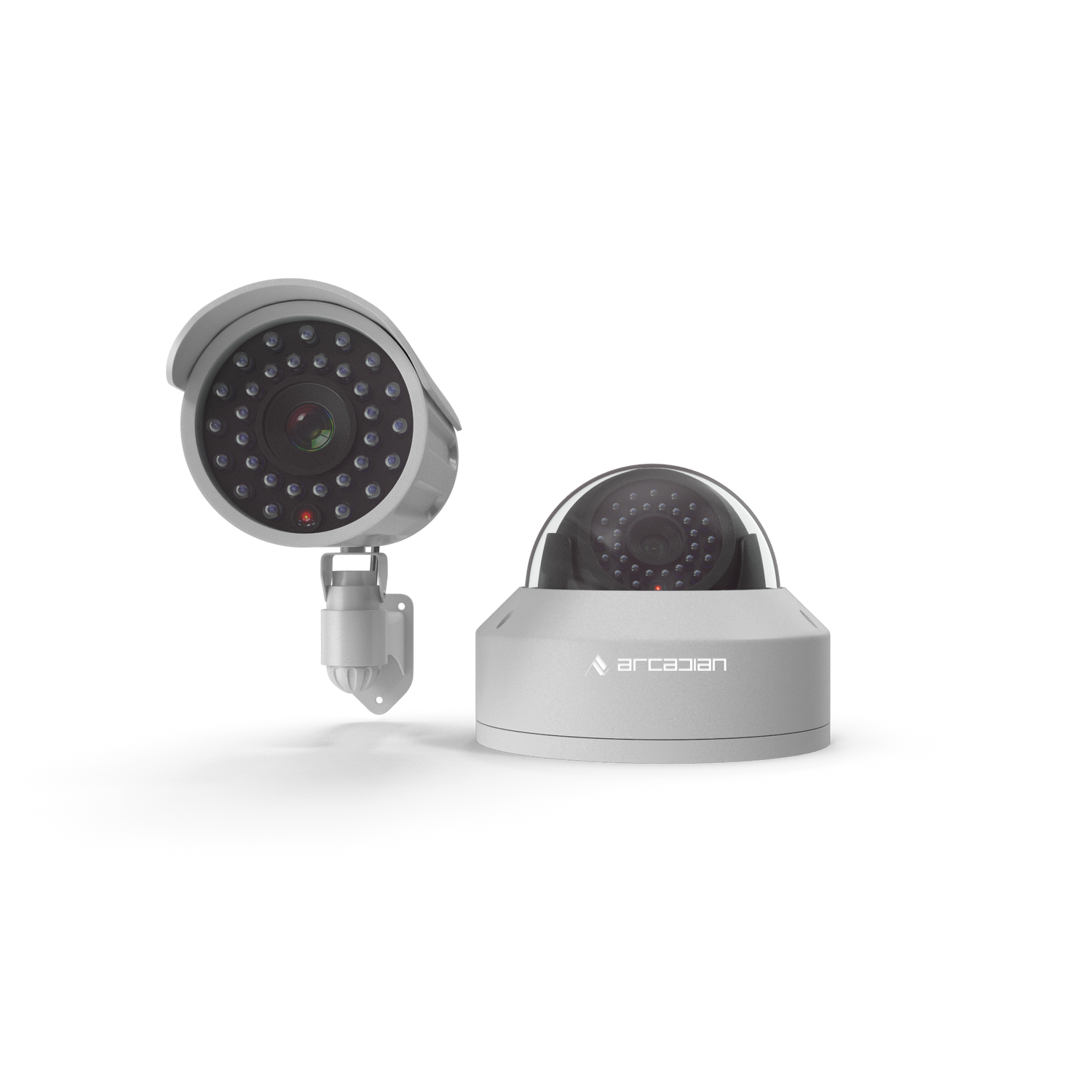Physical Security Measures Every Retailer Should Implement in 2025: A Complete Guide
Retail theft costs U.S. retailers over $112 billion annually. In 2025, static cameras and locked doors aren’t enough. This guide explores modern, AI-powered physical security measures every retailer needs to survive and thrive.

Introduction
In 2025, physical security measures for retail are no longer optional—they’re a matter of survival. The National Retail Federation (NRF) reported a staggering $112.1 billion in retail shrink in the U.S. in 2023, with organized retail crime (ORC) up by more than 26% year-over-year.
Traditional deterrents—padlocks, static cameras, security guards—once made sense. Today, they’re simply not enough. Criminals are better organized, more tech-savvy, and emboldened by the reality that many retailers’ systems are outdated, disconnected, and blind to context. Brands like Verkada, Genetec, and Milestone market sophisticated solutions, but most remain reactive rather than proactive.
That’s why ArcadianAI, with its Ranger AI assistant, is changing the equation. Ranger’s real-time, adaptive AI combines computer vision, behavioral analysis, and environmental context to detect threats before they escalate—whether it’s a shoplifter in Chicago, employee collusion in Toronto, or a flash-mob theft in Los Angeles.
This blog dives deep into the key physical security measures every retailer should implement, blending timeless best practices with modern, AI-driven strategies.
Quick Summary / Key Takeaways
-
Retail theft exceeded $112 billion in 2023
-
Static cameras miss threats; adaptive AI closes the gap
-
Physical security = deterrence + detection + rapid response
-
Employee theft accounts for 37% of retail shrink
-
ArcadianAI Ranger offers culture-aware, behavior-based detection
Background & Relevance
Retail security is now a multi-front war.
-
External threats: shoplifting, ORC gangs, vandalism, violent incidents
-
Internal threats: employee theft, sweethearting, fraudulent returns
-
Environmental threats: fires, floods, severe weather events disrupting operations
Recent Statistics (2023–2025 Data)
-
NRF: 78% of retailers reported an increase in violent shoplifting incidents.
-
Allied Universal: Average response time for on-site guards is over 5 minutes—too slow for most theft events that last under 90 seconds.
-
Eagle Eye Networks: 58% of retailers still rely on NVR-based systems prone to cyber breaches and blind spots.
The why now is clear: the stakes have never been higher. Physical security measures must evolve from static deterrence to dynamic, AI-driven, integrated systems.
Core Physical Security Measures Retailers Should Implement
Below, we break down each major measure—what it is, why it matters, and how ArcadianAI elevates it.
1. Surveillance Systems: Beyond Just “Cameras”
Most retailers have cameras. The problem?
They’re either dumb (just recording) or static AI that can’t adjust for different store layouts, cultural contexts, or seasonal changes.
Best Practice:
-
Deploy cloud-native, AI-driven video analytics
-
Integrate with PoS and inventory systems for forensic correlation
-
Ensure NDAA-compliance to avoid hardware bans
ArcadianAI Advantage:
Ranger analyzes behavior, not just motion—spotting theft attempts that traditional analytics miss.
Competitor Watch:
-
Verkada: Cloud-based, but proprietary lock-in and limited customization.
-
Genetec: Powerful, but requires complex IT setup.
-
ArcadianAI: Camera-agnostic, fully customizable, adaptive AI.
2. Access Control Systems
From the stockroom to the manager’s office, controlling who can go where is critical.
Options:
-
Keycards, biometric readers, mobile credentials
-
Integrated with surveillance for audit trails
ArcadianAI Edge:
Integrates door events with video and AI analytics—flagging anomalies like an employee accessing high-value storage outside of normal shifts.
3. Intrusion Detection & Alarms
Many alarm systems are still sensor-only, with high false-positive rates.
Best Practice:
-
Pair alarms with live video verification
-
AI-triggered alarms reduce false dispatches
ArcadianAI Advantage:
Ranger uses context—weather, scheduled events, and occupancy—to filter out false alarms (e.g., fluttering plastic bags outside a store won’t trigger police).
4. Security Personnel
Security guards deter crime—but human error, fatigue, and distraction are inevitable.
Best Practice:
-
Combine physical presence with AI-driven oversight
-
Train guards to respond to AI alerts, not random patrols
Reverse Psychology Insight:
The most dangerous assumption is thinking “a guard in the lobby means we’re safe.” Without intelligent support, guards are reactive witnesses, not active preventers.
5. Store Layout Optimization
A poorly designed store layout creates blind spots.
Best Practice:
-
Strategic product placement to reduce concealment areas
-
Mirrors and clear sightlines
-
AI-assisted layout audits to detect theft-prone zones
6. Lighting & Environmental Design
Lighting isn’t just aesthetic—it’s preventive.
Best Practice:
-
Bright, uniform lighting inside and outside
-
AI-controlled smart lighting that reacts to movement or unusual activity
7. Inventory Management & Tagging
RFID and EAS tags remain key tools.
Best Practice:
-
Integrate tag data with AI surveillance for theft correlation
-
Monitor tag deactivation patterns for employee collusion
8. Emergency Response Protocols
Security isn’t just theft—it’s life safety.
Best Practice:
-
Clear evacuation routes
-
AI-assisted emergency detection (fires, crowd surges, severe weather alerts)
Comparisons & Use Cases
| Feature / Vendor | ArcadianAI Ranger | Verkada | Genetec | Milestone | Eagle Eye Networks |
|---|---|---|---|---|---|
| Camera-Agnostic | ✅ Yes | ❌ No | ✅ Yes | ✅ Yes | ✅ Yes |
| Adaptive AI (Cultural) | ✅ Yes | ❌ No | ❌ No | ❌ No | ❌ No |
| Cloud-Native | ✅ Yes | ✅ Yes | ❌ No | ❌ No | ✅ Yes |
| Integrated Access Ctrl | ✅ Yes | ❌ No | ✅ Yes | ❌ No | ❌ No |
| Real-Time Behavior Analysis | ✅ Yes | Limited | Limited | Limited | Limited |
Common Questions (FAQ)
Q1: Do I need AI if I already have cameras?
A: Yes. Without AI, cameras only record—they don’t prevent or detect proactively.
Q2: How do I reduce false alarms?
A: Use AI that factors in context like weather, schedules, and behavior patterns.
Q3: Can I integrate existing hardware?
A: With ArcadianAI—yes. Ranger is camera-agnostic.
Q4: Is cloud surveillance secure?
A: Yes, if NDAA-compliant and encrypted end-to-end—like ArcadianAI.
Q5: How do I measure ROI on security upgrades?
A: Compare shrink reduction, incident response times, and operational savings.
Conclusion & CTA
In 2025, the smartest retailers know that physical security is not just about locking doors—it’s about integrating human presence, AI, and intelligent design into a cohesive, proactive defense system.
ArcadianAI Ranger gives retailers the adaptive, context-aware intelligence they need to protect staff, customers, and profits—without being locked into proprietary hardware or outdated monitoring models.
Get Your Personalized ROI Report → Get Demo – ArcadianAI

Security is like insurance—until you need it, you don’t think about it.
But when something goes wrong? Break-ins, theft, liability claims—suddenly, it’s all you think about.
ArcadianAI upgrades your security to the AI era—no new hardware, no sky-high costs, just smart protection that works.
→ Stop security incidents before they happen
→ Cut security costs without cutting corners
→ Run your business without the worry
Because the best security isn’t reactive—it’s proactive.







